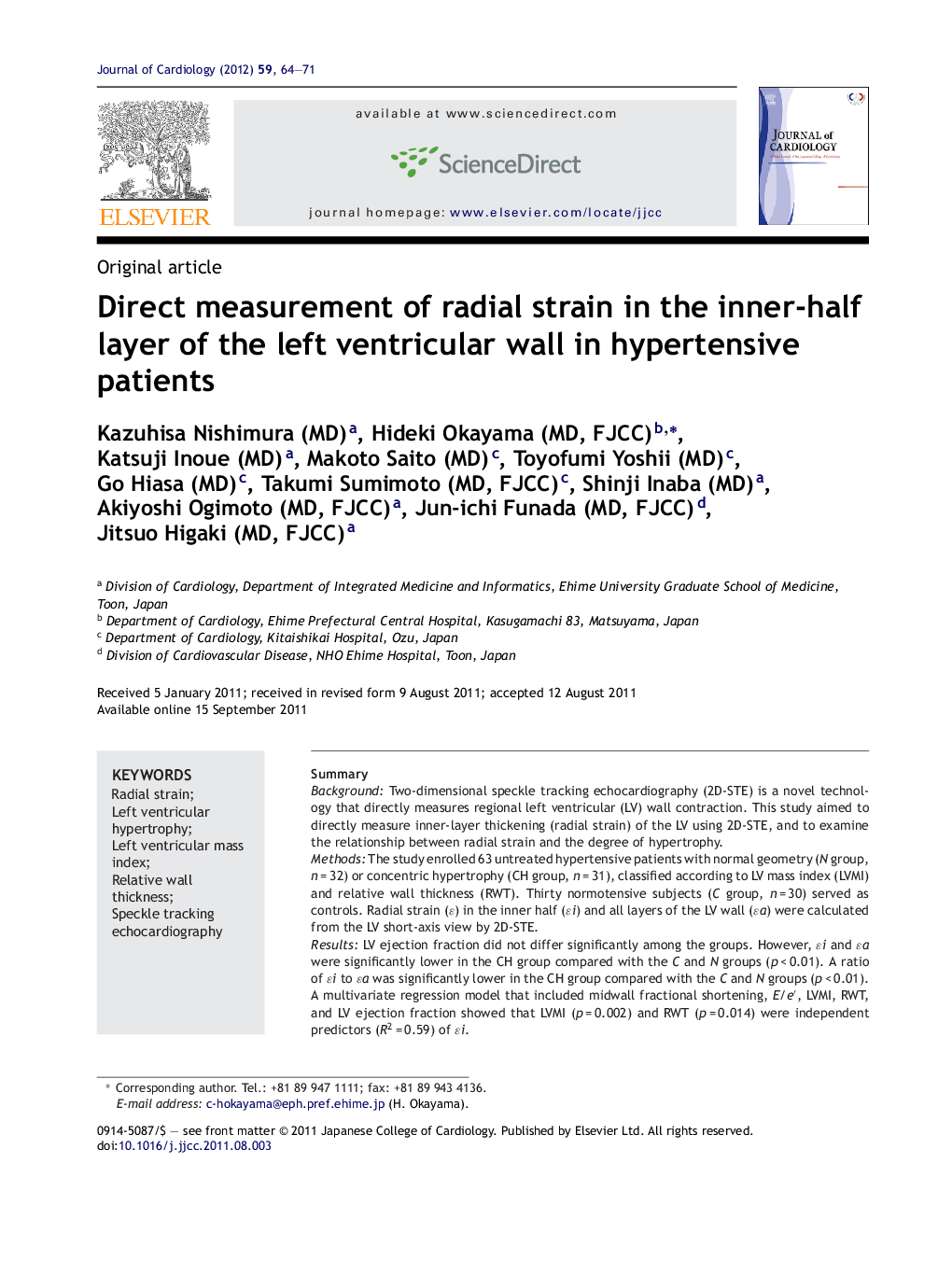| Article ID | Journal | Published Year | Pages | File Type |
|---|---|---|---|---|
| 2963170 | Journal of Cardiology | 2012 | 8 Pages |
SummaryBackgroundTwo-dimensional speckle tracking echocardiography (2D-STE) is a novel technology that directly measures regional left ventricular (LV) wall contraction. This study aimed to directly measure inner-layer thickening (radial strain) of the LV using 2D-STE, and to examine the relationship between radial strain and the degree of hypertrophy.MethodsThe study enrolled 63 untreated hypertensive patients with normal geometry (N group, n = 32) or concentric hypertrophy (CH group, n = 31), classified according to LV mass index (LVMI) and relative wall thickness (RWT). Thirty normotensive subjects (C group, n = 30) served as controls. Radial strain (ɛ) in the inner half (ɛi) and all layers of the LV wall (ɛa) were calculated from the LV short-axis view by 2D-STE.ResultsLV ejection fraction did not differ significantly among the groups. However, ɛi and ɛa were significantly lower in the CH group compared with the C and N groups (p < 0.01). A ratio of ɛi to ɛa was significantly lower in the CH group compared with the C and N groups (p < 0.01). A multivariate regression model that included midwall fractional shortening, E/e′, LVMI, RWT, and LV ejection fraction showed that LVMI (p = 0.002) and RWT (p = 0.014) were independent predictors (R2 = 0.59) of ɛi.ConclusionRadial strain in the inner half layer of the LV wall decreases in parallel with the degrees of LV concentricity and hypertrophy in hypertensive patients. Radial strain in the inner half layer may identify subtle systolic dysfunction even in hypertensive patients with preserved LV chamber function.
